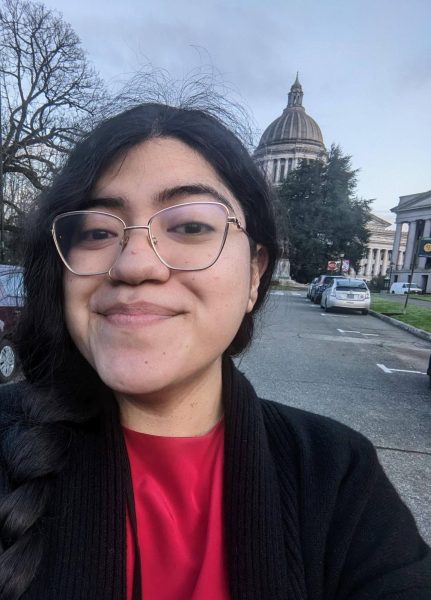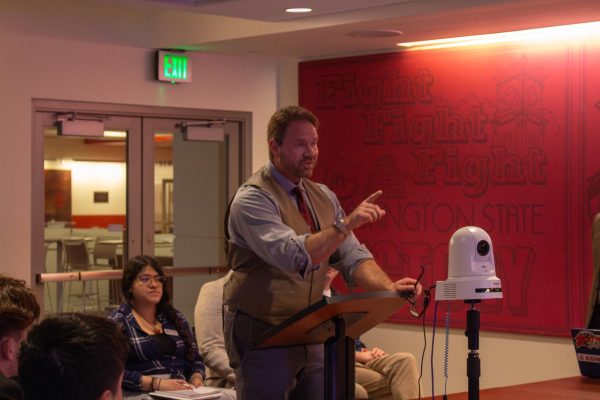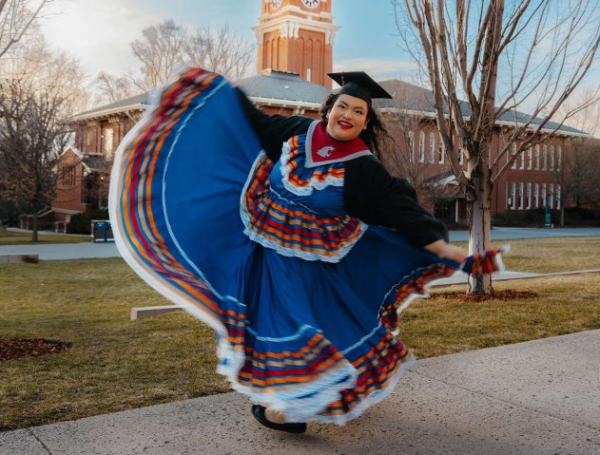Professors studying how to fit more data into less space
Business competition sparks battle for more information per bit
OLIVIA WOLF | THE DAILY EVERGREEN
“We have got to get more efficient at storing data without error,” Associate Professor Ben Belzer says as he discusses the $500,000 grant Friday.
December 3, 2018
Two WSU associate professors have received a $500,000 National Science Foundation grant to develop computer technology to read tightly-packed information on hard drives while limiting error rates.
Krishnamoorthy Sivakumar and Ben Belzer, both from the School of Electrical Engineering and Computer Science, are helping hard drive industry increase the number of bits per square inch, or information density, stored on a hard disk by a factor of 10.
Belzer said a modern hard drive records data on a thin strip of magnetic material in the disk, and data is stored digitally through tiny magnetized regions on each strip. To write data on a hard drive, the grains are magnetized to north or south pole to store a one or a zero.
The problem occurs as hard drive manufacturers are trying to jam more information into each square inch of the drive to meet demand, he said.
There are currently three major manufacturers competing to create hard drives with the most storage information to bit size, Belzer said — Seagate Technology, Western Digital and Toshiba.
“The number of bits per square inch has grown exponentially,” Belzer said.
Current disks record the bits of information on a single track with square cells that spiral from outside to inside, he said. One track is read at a time, and because the bits are squished together this can lead to interference.
He said when that occurs, tracks above and below the one being read create “media noise” that can make the data unreadable.
Belzer also said that as the magnetic grains on the disk get smaller, they are more likely to flip polarity under the influence of temperature. To make them less likely to flip, one could increase the energy needed to flip a grain from a magnetized to a demagnetized state, he said. However, this causes the magnetic field strength needed to intentionally flip a bit to be too high.
Because of this problem, there are new methods to increase the amount of storable data including two-dimensional magnetic recording (TDMR) and heat-assisted magnetic recording (HAMR).
Belzer and Sivakumar are working to ensure that TDMR can record accurate, readable data while storing more information in a smaller space.
Using machine learning techniques, they are creating a computer algorithm that is able to learn from the disk signals when the hard drive is read, Belzer said. The information will be processed in a loop to increase efficiency.
The pair of associate professors is training the algorithm using simulated data provided by a collaborator on the project, Sivakumar said. In the future, their algorithm will learn what kinds of errors occur and then be able to predict them.
“We have got to get more efficient at storing data without error,” he said. “A single error could corrupt a whole file.”





















